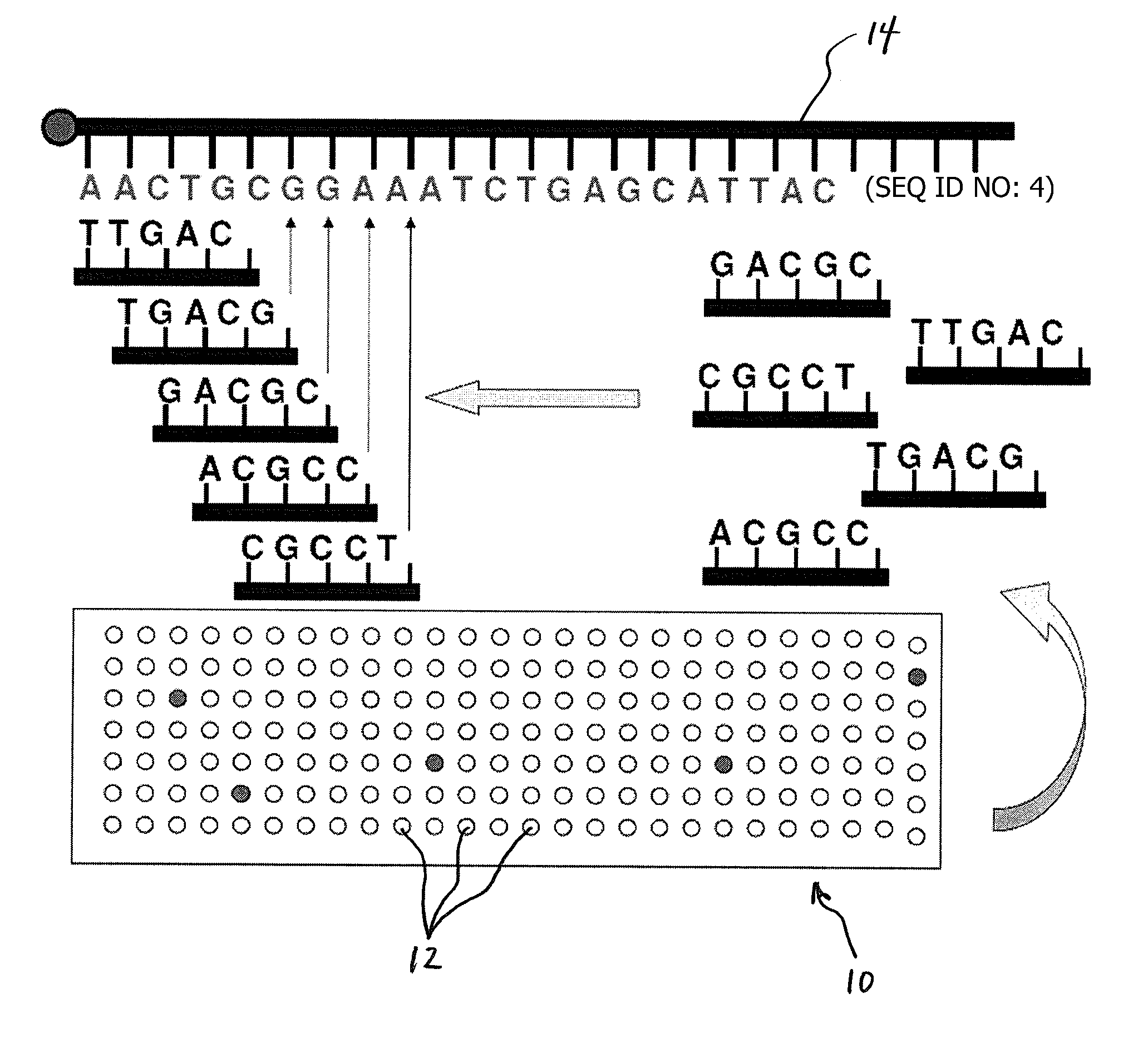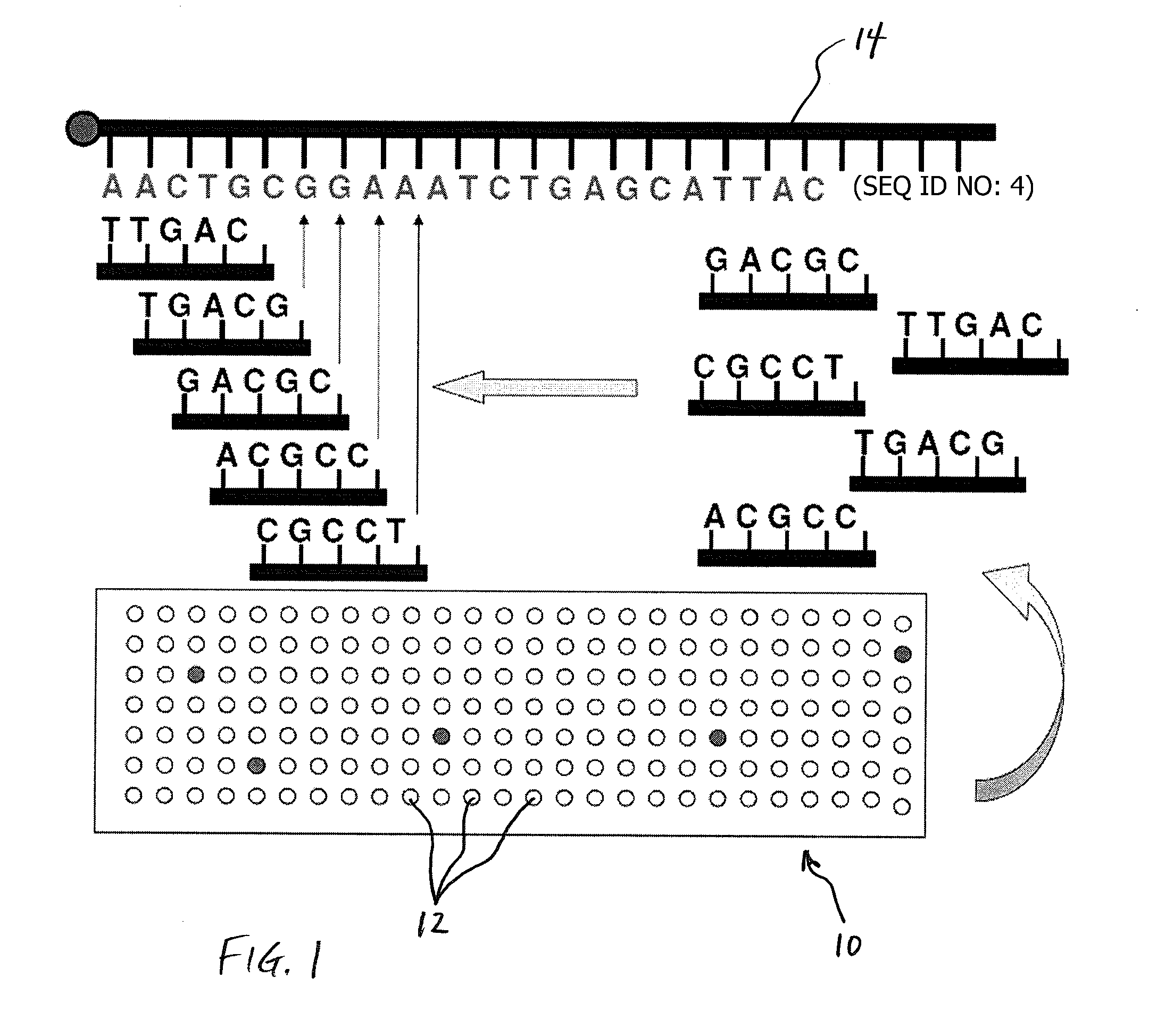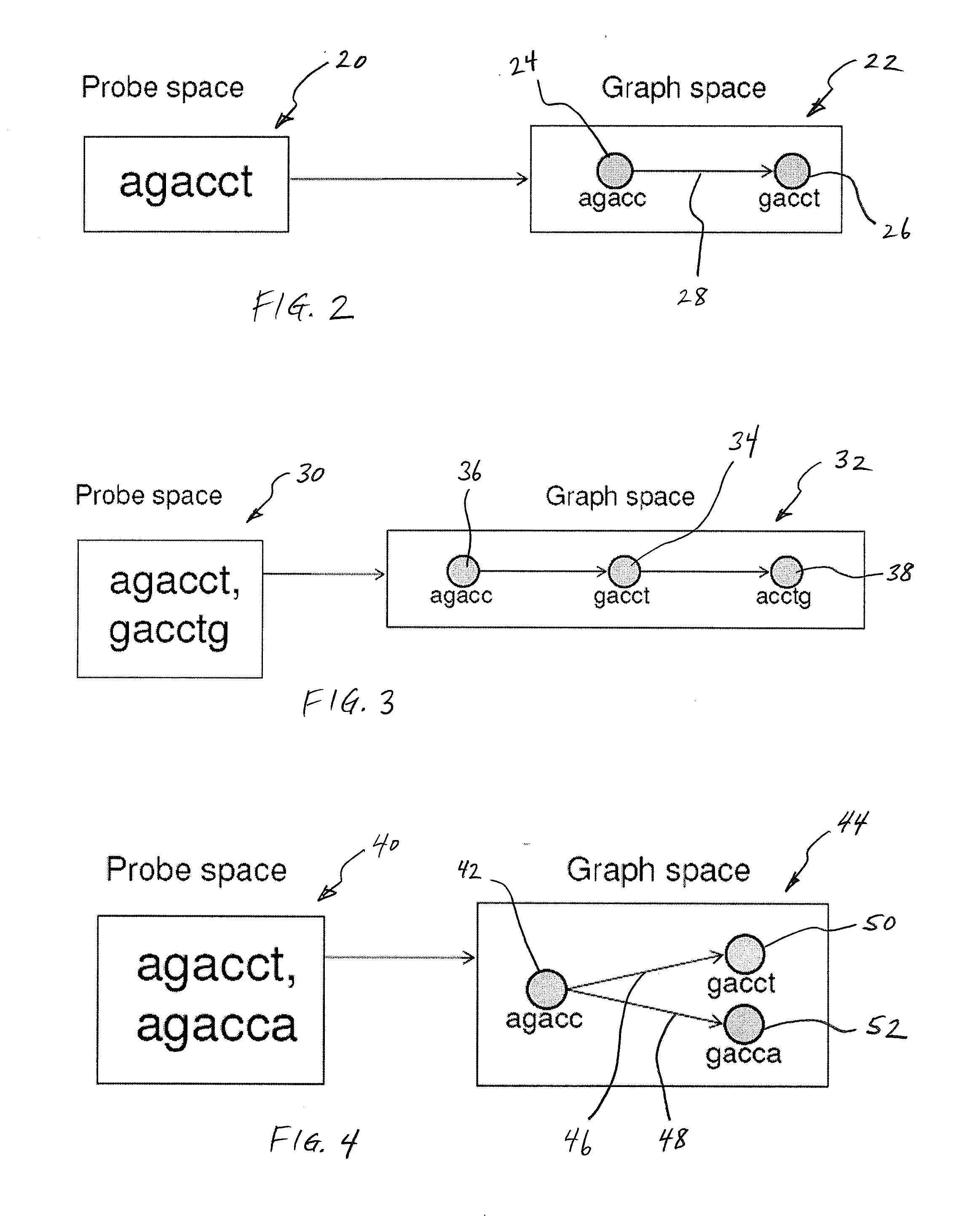Methods for Sequencing a Biomolecule by Detecting Relative Positions of Hybridized Probes
a technology of hybridized probes and sequencing methods, applied in the field of biomolecule sequencing methods, can solve the problems of limited accuracy and ability to distinguish electrical signals in the hans approach, the inability to use unlimited numbers of tags, and the inability to work within the sensitivity limitations of current hans systems, so as to eliminate or greatly reduce the ambiguities encountered
- Summary
- Abstract
- Description
- Claims
- Application Information
AI Technical Summary
Benefits of technology
Problems solved by technology
Method used
Image
Examples
Embodiment Construction
[0043]It is contemplated that devices, systems, methods, and processes of the claimed invention encompass variations and adaptations developed using information from the embodiments described herein. Adaptation and / or modification of the devices, systems, methods, and processes described herein may be performed by those of ordinary skill in the relevant art.
[0044]Throughout the description, where devices and systems are described as having, including, or comprising specific components, or where processes and methods are described as having, including, or comprising specific steps, it is contemplated that, additionally, there are devices and systems of the present invention that consist essentially of, or consist of, the recited components, and that there are processes and methods according to the present invention that consist essentially of, or consist of, the recited processing steps.
[0045]It should be understood that the order of steps or order for performing certain actions is i...
PUM
| Property | Measurement | Unit |
|---|---|---|
| length | aaaaa | aaaaa |
| fluidic volume | aaaaa | aaaaa |
| electrical signal | aaaaa | aaaaa |
Abstract
Description
Claims
Application Information
 Login to View More
Login to View More - R&D
- Intellectual Property
- Life Sciences
- Materials
- Tech Scout
- Unparalleled Data Quality
- Higher Quality Content
- 60% Fewer Hallucinations
Browse by: Latest US Patents, China's latest patents, Technical Efficacy Thesaurus, Application Domain, Technology Topic, Popular Technical Reports.
© 2025 PatSnap. All rights reserved.Legal|Privacy policy|Modern Slavery Act Transparency Statement|Sitemap|About US| Contact US: help@patsnap.com



